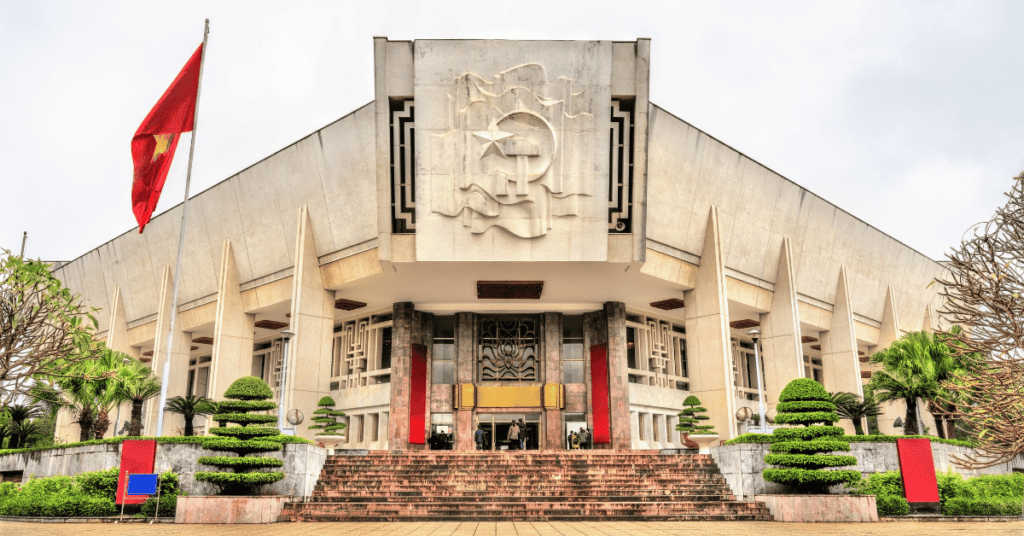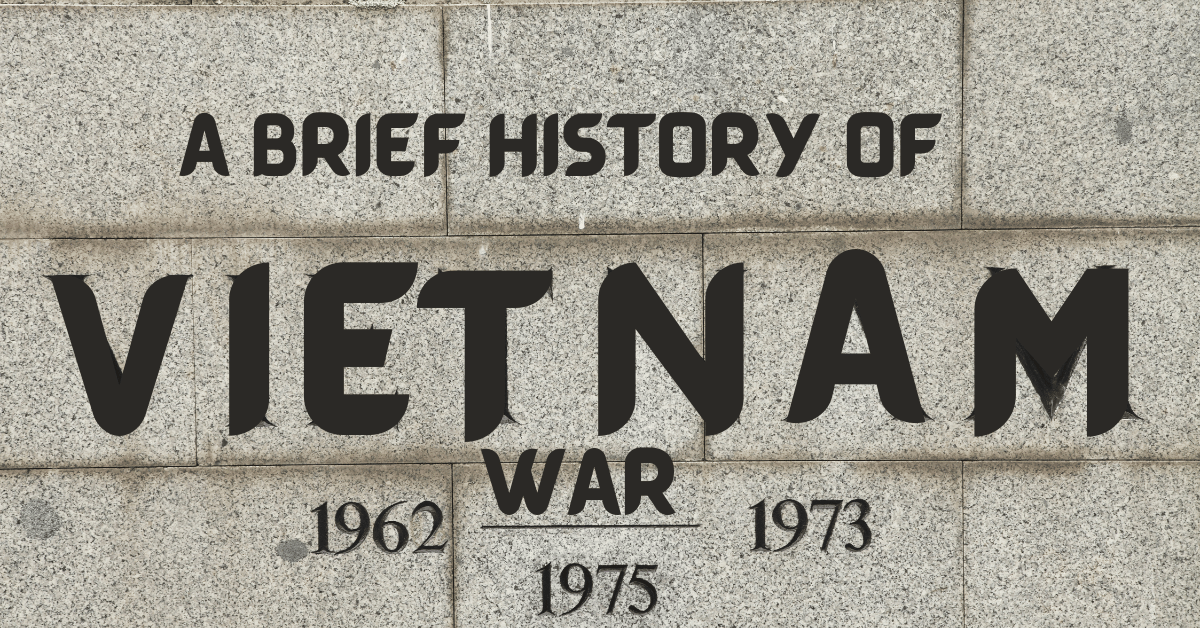The Vietnam War was fought between South Vietnam and North Vietnam. However, international players also played their role. Let’s explore more
The Beginning of the Vietnam War
In 1887, the French colonial system was established in Vietnam, known as “French Indochina”. From 1923 to 1925, “Ho Chi Minh was trained as an agent of Communist International by the Soviets”. He started his political career after forming the Indochinese Communist Party. In June 1940, France was captured by Germany and German ally Japan captured Indochina. To resist imperialism, Ho Chi Minh created the League for the Independence of Vietnam in 1941. After the nuclear attacks, Japan surrendered before the Allied powers. France again tried to assert its control over Indochina, but Ho Chi Minh declared North Vietnam an independent nation.
To avoid the US antagonism, the Vietnamese framed their declaration of Independence similar to that of American declarations, but it proved futile. In 1946, Ho Chi Minh started guerilla warfare against France. US President Truman extended support to French Vietnam in 1947. On the other hand, the Soviet Union emerged as nuclear power, and Mao Zedong-led Communist China was established. These events changed international geopolitics. In 1950, China and the Soviets recognized North Vietnam and provided it with economic and military aid.


The Downfall of France
In 1954, massive conflicts resulted in the humiliating defeat of France following the end of French rule. Keeping in mind the Domino effect theory, US President Eisenhower feared that this could expand communism in the region. The Geneva Accord of 1954 recognized North and South Vietnam as separate entities. There was also an option of unification of both entities, but nobody paid enough attention. In 1960, the National Liberation Front in South Vietnam was formed. The US supported this insurgent group, but the US forces were not on the ground so far.
In 1962, under Ranch Hand Operation, Agent Orange which was a chemical weapon was spread in some areas of South Vietnam to damage crops in North Vietnam and to obstruct North guerilla warfare. South Vietnam was also facing political instability during this time. From 1963 to 1965, it witnessed 12 governments.
Entry of the US soldiers into the Vietnam War
In 1964, the US accused North Vietnam that it had attacked the USS Maddox destroyer ship in the Gulf of Tonkin. The Gulf of Tonkin Resolution empowered the US president regarding any decision including on-ground armed forces in Vietnam. In March 1965, US Marines entered the Vietnam War as the first combat troops. Till 1969, the number of US troops exceeded 5 lakhs. The US faced so many challenges except for a few victories.
Tet Offensive and loss of popular support
In 1968, North Vietnam launched its game-changing Attack-Tet Offensive which caused destructive damages. Frustrated by the offensive attack, US forces killed more than 500 civilians in the Mai Lai Massacre weakening domestic support. The US witnessed massive anti-war protests because of massive humanitarian losses. As a result, the US president of that time, Richard Nixon, decided to reduce troops in Vietnam. In 1972, only 65000 troops were there in Vietnam. In addition to it, US Security Advisor Henry Kissinger held secret negotiations with North Vietnam.
Pentagon Papers and the US exit
The Pentagon Papers released by the New York Times revealed that the US ostensibly reduced its troops; however, it secretly increased its influence in Vietnam. On the other side, North Vietnam captured many territories in South Vietnam. In response, the US launched Operation Linebacker in the very populated region of Hanoi-Haiphong causing public wrath in America. By signing Paris Peace Accord in 1973, the US ended its direct involvement in Vietnam.
The Fall of Saigon
North Vietnam accepted the ceasefire, but as the US left, it started planning to annex South Vietnam. In April 1975, South Vietnam’s capital Saigon was seized by North Vietnam. North and South Vietnam were united in 1975 and Vietnam formally emerged as a Socialist Republic under hardline communists.
Cost of the Vietnam War
Around 58000 American soldiers, 11 lacks North Vietnamese, 2.5 lakh South Vietnamese, and 20 lakh civilians were killed in this war.
Why the US lost the Vietnam War?
The major reason for the US defeat is considered a lack of enthusiasm in South Vietnam to fight. Historian Kevin Boylan said that the corrupt and inefficient government of South Vietnam could not convince its soldiers to fight in the war. They half-heartedly fought the war. On the contrary, North Vietnam fought with full spirit because they were ingrained with the idea South Vietnamese government supported by the US is responsible for their impoverishment and poverty.
The second reason was the fragmented politics in South Vietnam. There was fragmented opposition against communism. With the passage of time, strong opposition was being faded out. The popular support shifted towards communist guerillas. They started giving shelter to communist guerillas and it became hard for US troops to differentiate between civilians and communist guerillas.
The third reason was the US’s lack of commitment and its internal problems. If the US had used enough resources, it would have won the war. In this case, it would be a costly endeavor. The US would have to raise its taxes and use emergency financial reserves.
The last reason was the support of the USSR and China with North Vietnam which assured North Vietnam’s decisive victory. The last reason was anti-war sentiments in the US. Many events supported this sentiment to get deepen in Americans. Anti-war protests caused internal problems for the US contributing to the US defeat in the war.




